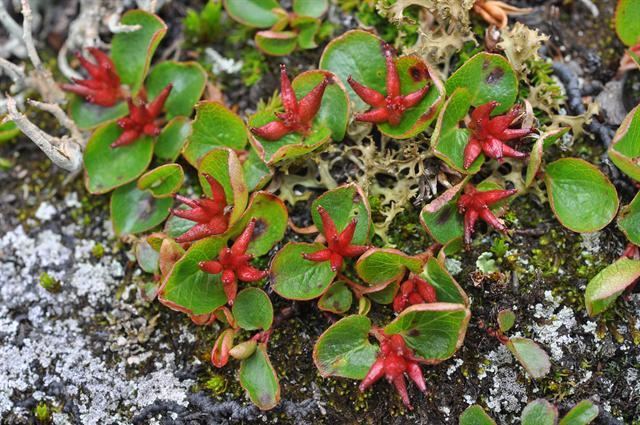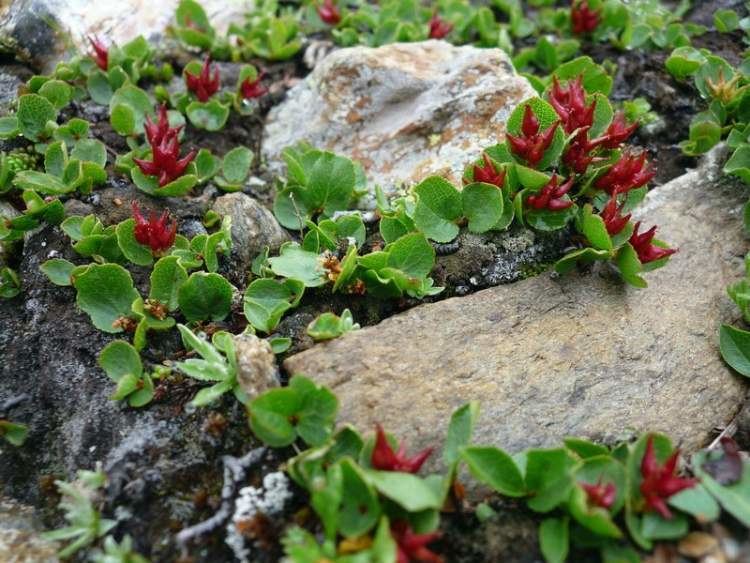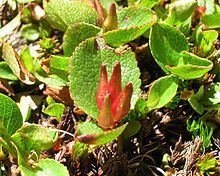Scientific name Salix herbacea Rank Species | Genus Salix Higher classification Willow | |
 | ||
Similar Willow, Salix reticulata, Saxifraga oppositifolia, Arctostaphylos alpina, Trifolium montanum | ||
Salix herbacea (dwarf willow, least willow or snowbed willow) is a species of tiny creeping willow (family Salicaceae) adapted to survive in harsh arctic and subarctic environments. Distributed widely in alpine and arctic environments around the North Atlantic Ocean, it is one of the smallest of woody plants.
Contents

Distribution

S. herbacea is adapted to survive in harsh environments, and has a wide distribution on both sides of the North Atlantic, in arctic northwest Asia, northern Europe, Greenland, and eastern Canada, and further south on high mountains, south to the Pyrenees, the Alps and the Rila in Europe, and the northern Appalachian Mountains in the eastern United States. It grows in tundra and rocky moorland, usually at over 1,500 m altitude in the south of its range but down to sea level in the Arctic.
Appearance

The dwarf willow is one of the smallest woody plants in the world. It typically grows to only 1–6 cm (0.4–2.4 inches) in height and has round, shiny green leaves 1–2 cm long and broad. Like other willows, it is dioecious, with male and female catkins on separate plants. As a result, the plant's appearance varies; the female catkins are red-coloured, while the male catkins are yellow-coloured.


